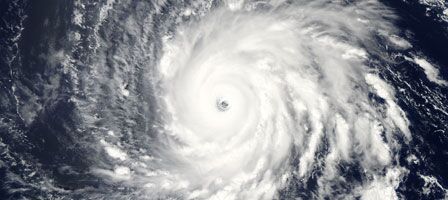Disaster-Related Tax Losses May Be Less Than Expected
 Article Highlights:
Article Highlights: - Limitation to Losses within Disaster Areas
- Cost versus Market Value
- Home Tax Losses
- Home Tax Gains
- Replacement Properties
- Home Gain Exclusion
Even those who have deductible losses quickly find out that they cannot claim as much in tax losses as they expected. This is because the losses are not based on the cost of replacing the home; instead, they are based on the original cost of the home (plus any improvements prior to the date of the casualty). For those who have owned their homes for a long time before a casualty, the tax benefits of the resulting loss are greatly diminished.
This all stems from the fact that a casualty loss on a home is valued at the lesser of the home’s cost or its current market value (minus any insurance reimbursements). Because real estate generally appreciates in value, most casualty losses are based on the original cost of the home rather than on its current value or its replacement cost.
Example #1: Joe and Susan purchased their home many years ago for $125,000, but its current market value is $400,000. Their home is then destroyed as a result of a federally declared disaster. They did not have insurance. Thus, their casualty loss is only $125,000 (the original cost), as that is less than the current market value. Thus, even though they suffered a $400,000 financial loss, the tax loss is only $125,000. (Even worse, the actual deductible loss is even less, as reductions of $100 per casualty and 10% of adjusted gross income must first be applied.)
If a home is insured, then an actual financial loss due to a disaster can actually result in a tax gain.
Example #2: The circumstances are the same as in Example #1, except Joe and Susan’s homeowners’ insurance paid them 100% of the home’s current value. For tax purposes, the $125,000 original cost must be used; the insurance reimbursement is then subtracted from that cost to determine the casualty loss. As a result, after the $400,000 reimbursement, Joe and Susan actually have a $275,000 tax gain ($400,000 minus $125,000) instead of a loss.
Luckily, the new tax law includes a provision in which the homeowner can treat the involuntary conversion of a principal residence due to destruction (among other situations) as a sale. Such sales are eligible for the home-sale gain exclusion, provided that the taxpayers meet certain requirements for length of ownership and occupancy. Married taxpayers who file jointly can exclude up to $500,000 of home-sale gain after such a disaster, provided that they have owned and lived in the destroyed home for at least 2 of the prior 5 years. (For a single taxpayer, that exclusion is $250,000.) Thus, in Example 2, if Joe and Susan meet these requirements, they can exclude all of their $275,000 gain (because it is less than $500,000). If the gain is greater than this limit, the remaining amount can be deferred, provided that the taxpayer purchases a replacement residence.
The insurance proceeds that homeowners receive for a destroyed residence (or its contents) are treated as a common pool of funds. If those funds are used to purchase a property that is similar to lost property, then the taxpayer must recognize the gain only to the extent that the funding pool exceeds the cost of the replacement property. The period for replacing damaged or lost property is four years, starting with the end of the first taxable year when any part of a gain due to involuntary conversion is realized.
Under all circumstances, homeowner’s insurance is appropriate; in fact, mortgage lenders generally require it. Be sure that your home is insured for an appropriate amount that includes any appreciation.
As you see, disaster-related casualty losses can be tricky, and the results can be unexpected. Please call this office if you have experienced a disaster-related loss or if you have any questions.
|
|  |





